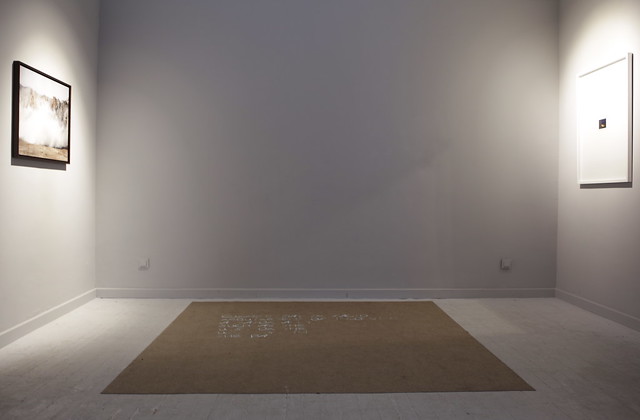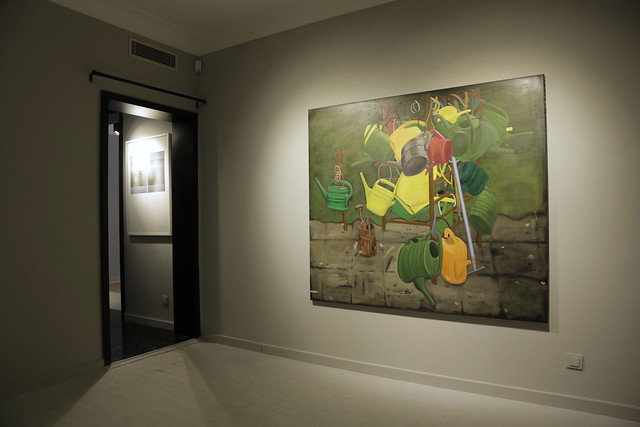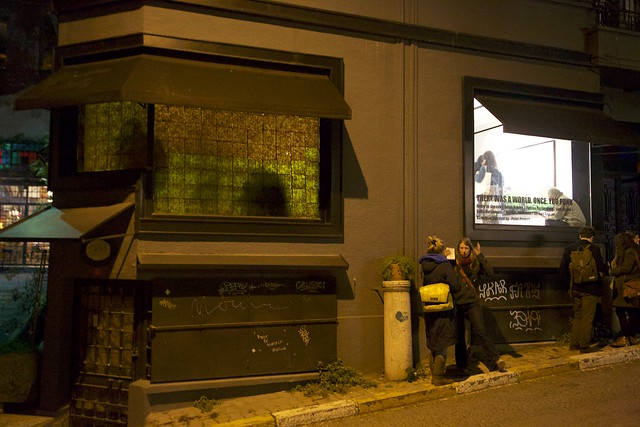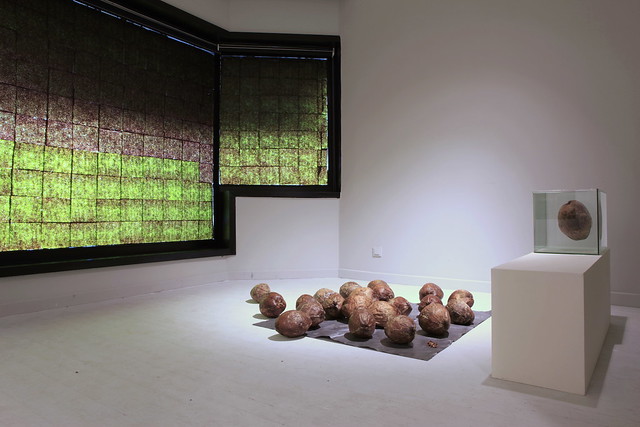
Andreas Greiner, Dunja Herzog, Florian Meisenberg, Lars Bjerre, Lydia Ourahmane, Markus Hoffmann and Serkan Taycan
Curated by Point Project
18.11.2016 – 06.01.2017
Motifs and colours of nature have long been essential in the history of art, especially in Romanticism, to express the creator’s devotion to nature and its sublime aura. Until today, images of nature, embedded for example in advertise, in the supposedly eco-friendly display of products, and in visual culture in general, are employed to symbolise an ideal habitat of all living creatures. Popular culture, such as movies, often express a notion of utopia or paradise through imagery of nature, as opposed to the constricted and artificial feeling of the city in which most characters are used to live in. Continually threatened, nature has thus not only become appreciated as a precious sanctuary for society, but it is also perceived as a public space for physical and mental freedom.
In the course of the exhibition “There was a world, once, you punk”, the curatorial collective Point Project aims to mark the increasing deficiency of nature in the urban space. Set at BLOK art space in Istanbul, the topic owns a particular level of actuality keeping the recent events mind, when hundreds of people began occupying one of the last remaining green islands in the city centre, demonstrating against plans to replace trees and a green field with a shopping mall and luxury flats. Functioning as a breaking point for further nationwide environmental resistance movements, the demonstration’s topics have been broadening beyond the urban development of the park, touching upon issues of freedom, the ownership of public space and democracy. Therefore the question that comes to mind is how much of our desire for nature is linked to a desire for society’s or one’s personal freedom? What happens to the human being, if these fundamental needs are being suppressed in the on-going creation of artificial space and industrialisation?
With these questions in mind, three themes and perspectives are being explored within the exhibition: Firstly, the political symbolism of nature and its deficiency in urban space, targeted in the works of Andreas Greiner (DE), Lydia Ourahmane, (ALG) and Serkan Taycan (TUR). Secondly, the aesthetic dimension of nature and botany, embedded in strategies employing motifs or material from nature in a poetic or immersive way of storytelling, as in the works of Dunja Herzog (CH) and Lars Bjerre (DK). And thirdly, critical reflections on the commonly affirmative and utopian symbolism that nature implies in today’s visual culture, such as in Florian Meisenberg’s (DE) and Markus Hoffmann’s (DE) installations, by juxtaposing natural and artificial landscapes, and by rendering destructive materials into aesthetic environments.
Introducing both, site-specific and already established projects of the artists, the exhibition eventually poses the question whether art can do more than just pointing to such a critical issue, by initiating a return to nature possibly through a performative act. As part of the exhibition, a rich program of talks and discussion rounds will be encouraging an open debate and thinking about the on-going change of “natural” habitat in urbanity.
Sol: There was a world, once, you punk.
Det. Thorn: Yes, so you keep telling me.
Sol: I was there. I can prove it.
Det. Thorn: I know, I know. When you were young, people were better.
Sol: Aw, nuts. People were always rotten. But the world ‘was’ beautiful.
Soylent Green (1973)
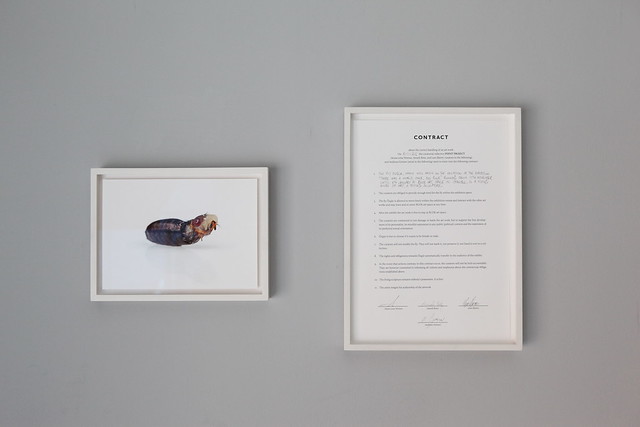
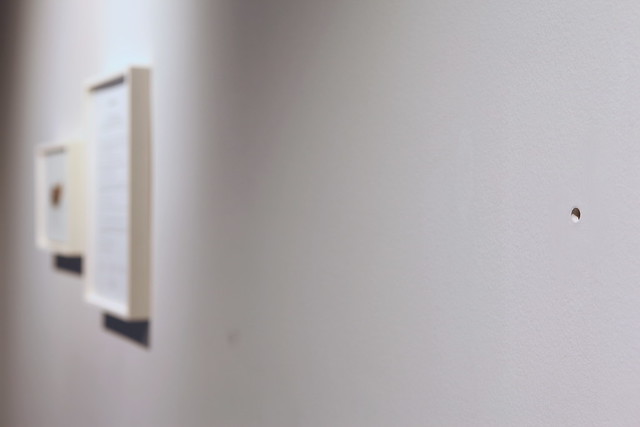
Andreas Greiner (D)
"Der freie Grundriss" (2014-16)
Fly in a cocoon; contract in a frame; photo of a fly in a frame.
In November 2016 a pupated fly maggot is placed inside a hole in the walls of BLOK art space Çukurcuma in Istanbul. Once Özgür, the fly, hatches from its cocoon it may move freely as flying sculpture through the exhibition space without any limitation from the gallery or its staff. The curators, Anna-Lena Werner, Anneli Botz and Lars Bjerre are bound by contract to respect the fly as a living artwork and provide for its well being. The contract stipulates the allocations of autonomy and responsibility, raising the question for a need of a new sensitivity towards all living forms that we share our environment with. Forming an anthropogenic thesis, Andreas Greiner's work challenges and collapses the common oppositions between nature and human, subject and object, by granting the fly rights traditionally reserved for human beings. Andreas Greiner was born in 1979, he lives and works in Berlin.
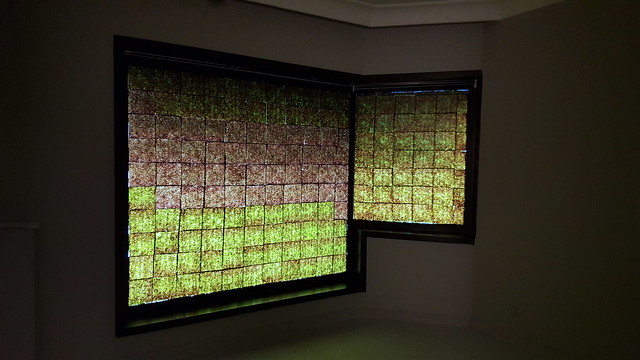
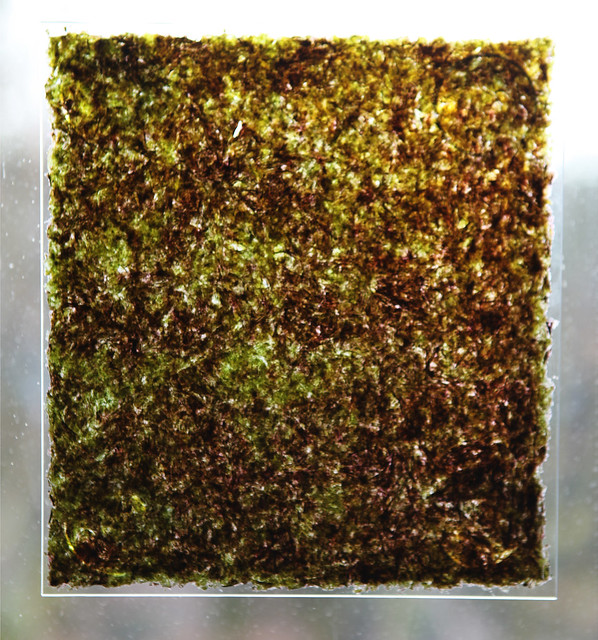
Dunja Herzog (CH)
"Shoji (Living Space)" (2014-2016)
Algae/Nori sheets attached to the window
Inside the gallery space there are more than a hundred Nori seaweed sheets attached to a large window. Having a pixelated aesthetic, the window is covered in a dark green colour and is thus literally coming to life. Being one of the oldest photosynthetic organisms on our planet and responsible for cleaning the oceans, the seaweed also has a transitioning effect on the gallery space: The marine algae’s material creates a natural habitat with its own rules. The immersive installation raises the sensual perception of light, colour and smell inside the space, manipulating the atmosphere into an under-water-experience. Typical to her work, Dunja Herzog uses 'objets trouvé', such as the Nori sheet, that she re-contextualises or combines with other ready- mades, thereby creating alien environments. Dunja Herzog was born in 1976 and currently lives and works between Berlin and Basel.
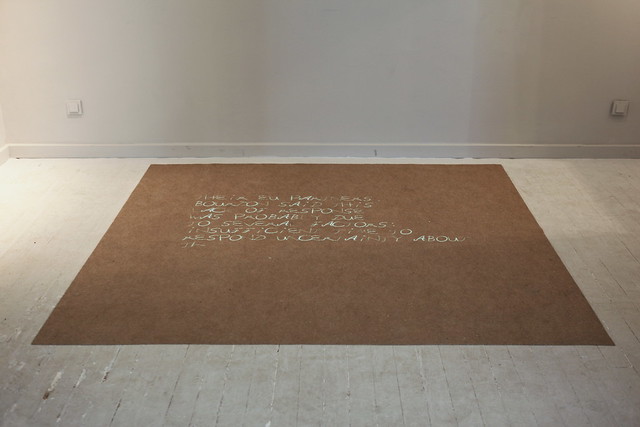
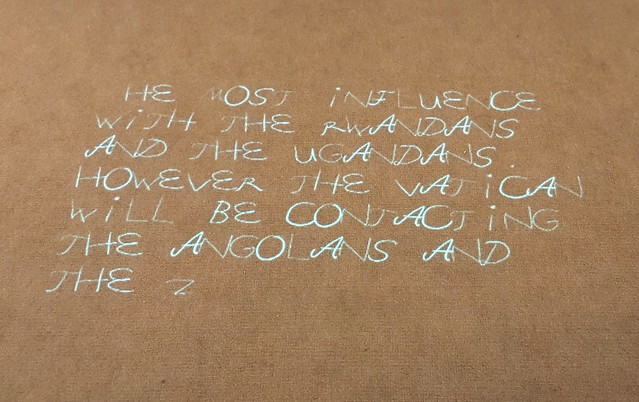
Florian Meisenberg (D)
“Blowing from the west, fallen leaves, gather in the east.” (2016)
Projection run by custom-made script
Projected on a carpet on the gallery's floor, text appears in the shape of white letters formed by the artist's own, digitalised handwriting, thereby reminding of a signature's typography. It dissolves as quickly as it appears. The order and structure of the text is generated by a program that Florian Meisenberg developed with software engineer Tommy Martinez, using an algorithm that accesses and utilises text files from the entire WikiLeaks website – an archive that embeds 40 gigabyte of confidential material. Acting as a sort of artificial intelligence, the program continuously generates new text fragments, preventing the information to repeat itself. Both, the calligraphic, soft form of presentation and the random choice of content add a poetic note to sheer endless number of text files, undermining the data's importance and their eventual brutality. Despite being accessible for everyone, the enormous amount of knowledge and political intelligence stored online is thus introduced as an alien dimension, detached from individual feelings. Here suggested by the personal note of handwriting and the projection on a comfortable carpet, the subject of intimacy in a digitalised world is a coherent theme in the artist's work, expressed in both physical and digital relations of beings and objects.


Lars Bjerre (DK)
"Untitled" (2016)
Oil on Canvas
The motif of Lars Bjerre's painting shows more than a dozen, colourful watering cans locked to a rusty structure. A green and softly applied hedge forms the background, taking the shape of an unusually wavy bottom that seems to flood over the grey, tiled floor in the foreground. Doodles, dots and pastel-coloured smudges hover above the floor, adding an unreal atmosphere to the already peculiar scenario. Using painting as a means to create open narratives and cinematic sequences, many of the artist's works discuss the positive, emotional value of natural environments, such as the woods, and juxtapose these to objects or man-made-structures of human interferences. Visually apparent consequences of larger social processes like urbanisation and deforestation, as well as their ambivalent outcomes, are thus central to his practice. Lars Bjerre was born in 1975, he lives and works in Berlin and Copenhagen.
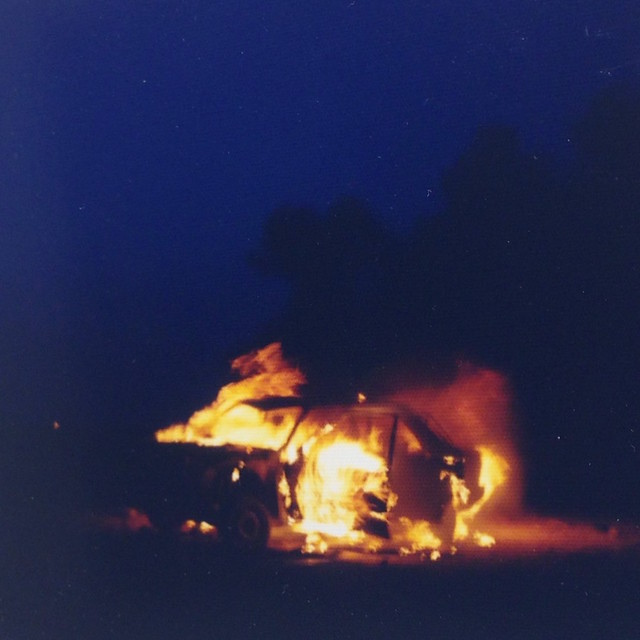

Lydia Ourahmane (ALG)
"Arzew" (2016)
Polaroid & Video loop
In Lydia Ourahmane’s video loop "Arzew" a burning car is firing up in the middle of a wasteland. Dark clouds of smoke accumulate into the air, setting a stark contrast against the blue hour’s cool sky; the breaking of the fast - a scenery of a melancholic aesthetic. The footage was shot amongst the gas refinery of Arzew in Algeria from which underground pipelines carry the gas 2,235 km to the reservoir of Saint Illiers, in northern France. The burning car of "Arzew" is set in direct relation to the pollution of Arzew, where
the waste fuel is mainly burnt off into the atmosphere unfiltered and direct. The particular gas flares, the artist is referring to, have been burning since 1973, reducing the air quality in these areas by around 20% in comparison to major cities in Algeria. Within her research Ourahmane discovered that the toxic fumes emitted from these kinds of gas refineries have been linked to multiple cancers and birth defects with continuous complaints from residents in surrounding villages that they "cannot breathe". This has caused a steady depopulation. Lydia Ourahmane was born in 1992 in Saϊda, Algeria. She is currently living and working between Oran, Algeria and London, UK. Her work explores youth and transitional existences, surveillance and complex social and political structures.
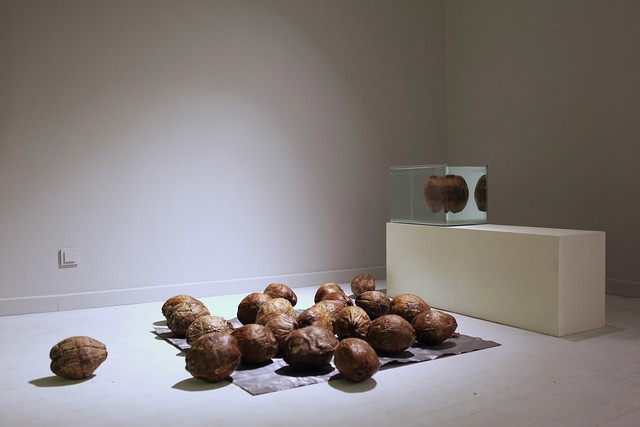
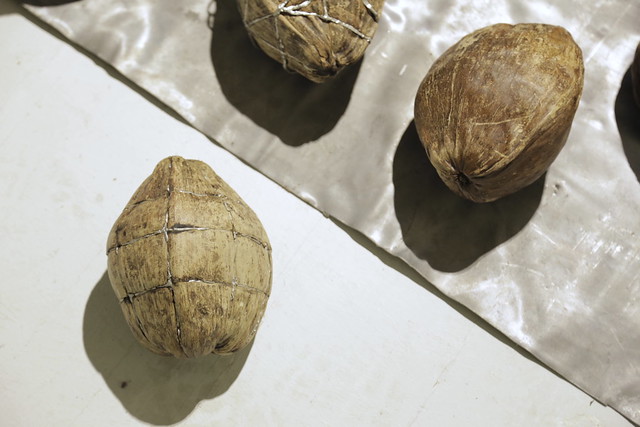
Markus Hoffmann (D)
"Bikini Atoll Containment" (2016)
Coconuts from the Marshall Islands, lead plate, salt water, glass cube
Placed on top of a lead plate, that is used to shield nuclear radiation, 37 coconuts are positioned next to a plinth carrying an aquarium that is filled with salt water. Floating in equilibrium, in the middle of the water, hovers a radioactively contaminated coconut from the Marshall Islands that the artist filled with lead. Some of the coconuts carry inlays of silver lead in reference to the navigation tools, the so-called "Stick-Charts”, which the island's local seafarers use. Markus Hoffmann's installation suggests the coconut as a metaphor for nuclear waste transportation and migration into the marine environment and thus into the world: His work refers directly to current consequences of nuclear testing that have been made during the Cold War at the Bikini Atoll. Contaminated by the isotope Caesium-137, the topsoil was deposited beneath the nuclear test crater – the so-called Cactus Dome –, but is now becoming a danger to the ocean, due to leaking cracks and the rising sea level. While coconut plantations were installed on the islands, using the plants to withdraw radioactive poison from the soil, the coconuts themselves are not consumable as they are toxic, too. As in many of the artist's works, an object, such as the coconut, is transformed in a formally aesthetic and minimalist manner, while it carries ambivalent and uncanny connotations once the viewer learns about its origin. Markus Hoffmann was born in 1982, he lives and works in Berlin.
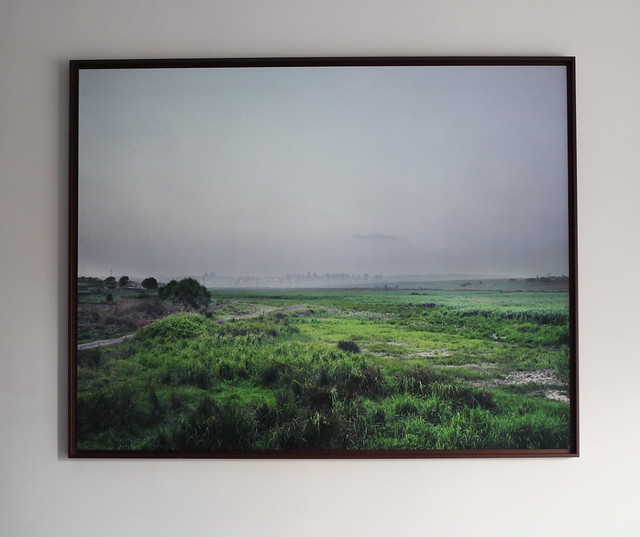
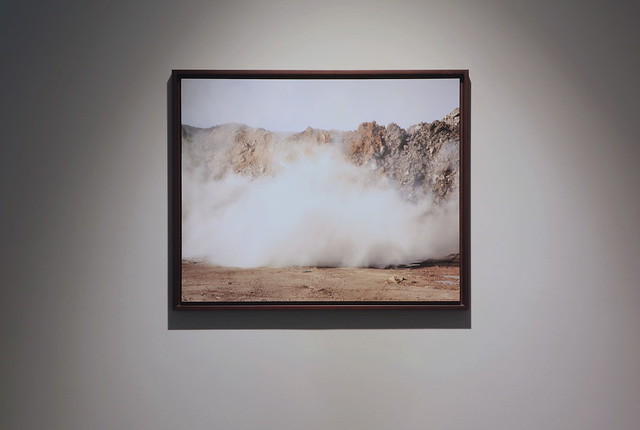
Serkan Taycan (TUR)
"Shell 1 & 13" (2012)
Archival pigment print on aluminium
In the photographic series „Shell“ artist Serkan Taycan sets out to reveal the fragile nature of massive cityscapes along of Istanbul, raising questions about the potential change of its urban landscape. What might be the new image of this ancient city, as it is turning into a megalopolis that is facing intense social and ecological problems due to unbridled construction projects? Artist Merve Ünsal says, "Serkan Taycan's photographs represent the shifting identity of a city that is marked by an amoebic, amorphous expansion that its inhabitants have become acclimated to. This acclimation, of course, is charged with a sense of resignation, wrapped in crusted frustration. After all, how could there be a claim of an identity when the periphery is both vaster and more illustrative of the current?“ In his observations, Serkan Taycan uses photography as a tool of research and analysis. Due to the slow process of their production, his photographs enable the artist to stay in the respective area for a longer period of time. A tangible presence that results in a close observation and a careful composure of the final image. Serkan Taycan was born in 1978, he lives and works in Istanbul.
INSTALLATION VIEWS
